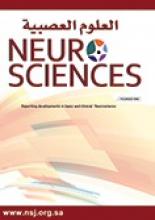Abstract
OBJECTIVE: To study the features and approaches of endovascular treatment for intracranial aneurysms with a ruptured bleb.
METHODS: This retrospective study was carried out from June 2007 to June 2009 in Jilin University, Jilin, China. Thirty patients with intracranial aneurysms with ruptured blebs were included. The aneurysms were diagnosed by digital subtraction angiography (DSA), and the endovascular treatment was planned according to the relationship between the aneurysm body and the ruptured bleb. The aneurysms were classified into 4 types (type I, II, III, IV) based on the size of the neck of the aneurysm connected with the parent artery, the size of the body of the aneurysm, and the size of the junction formed between the aneurysm and bleb. Endovascular treatment for each type of aneurysm was performed.
RESULTS: Type IV aneurysms were the most difficult operation performed, easily resulting in rupture and bleeding during surgery, whereas embolization of a type III aneurysm was relatively simple. Type I and II aneurysms resulted in better prognosis. Statistical analysis showed that the outcome of the treatment of type I and II aneurysms was better than that in type III and IV aneurysms, the outcome of type I, II, and III was better than that in type IV.
CONCLUSION: The outcome of the endovascular treatment of an intracranial aneurysm with a ruptured bleb was related to the aneurysm type. Treatment in a type-dependent manner is therefore recommended.
- Copyright: © Neurosciences
Neurosciences is an Open Access journal and articles published are distributed under the terms of the Creative Commons Attribution-NonCommercial License (CC BY-NC). Readers may copy, distribute, and display the work for non-commercial purposes with the proper citation of the original work.






